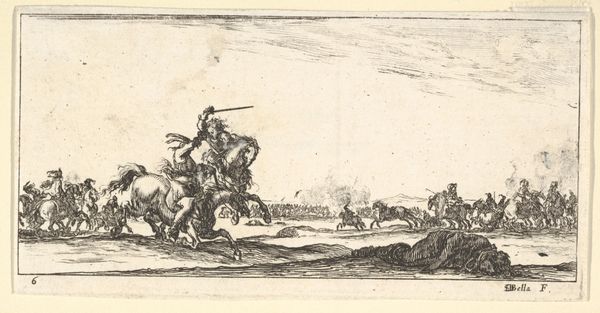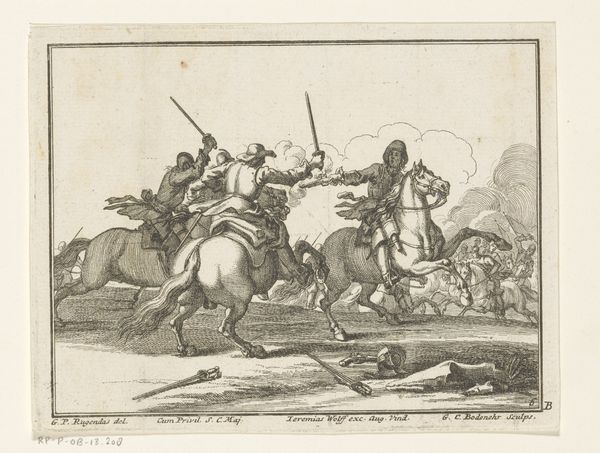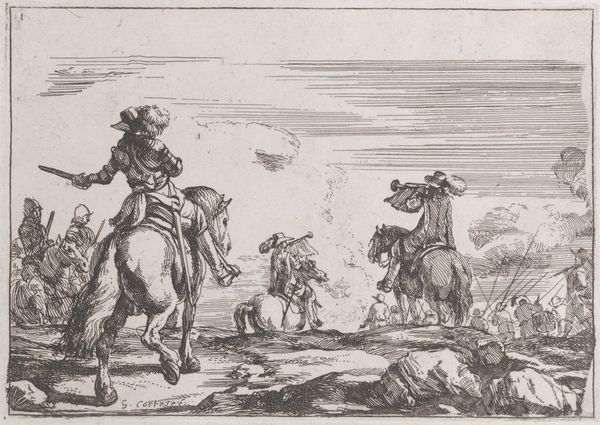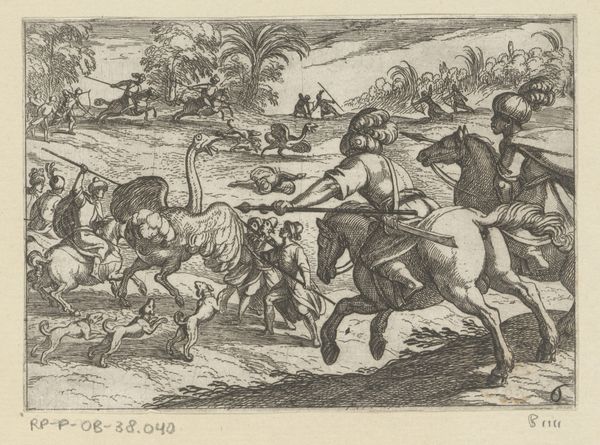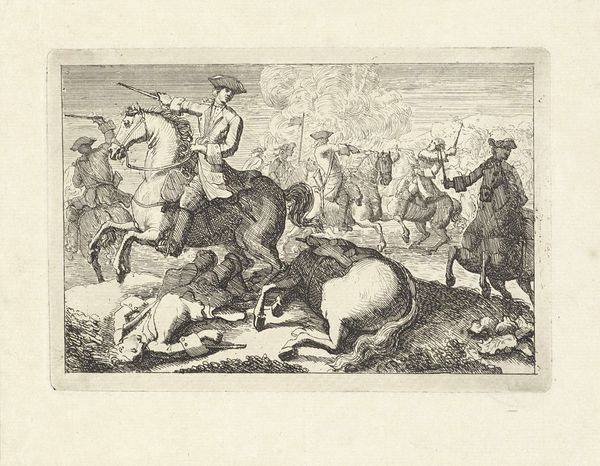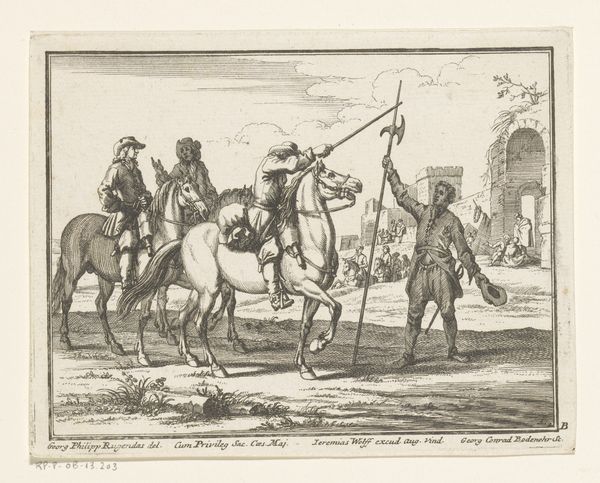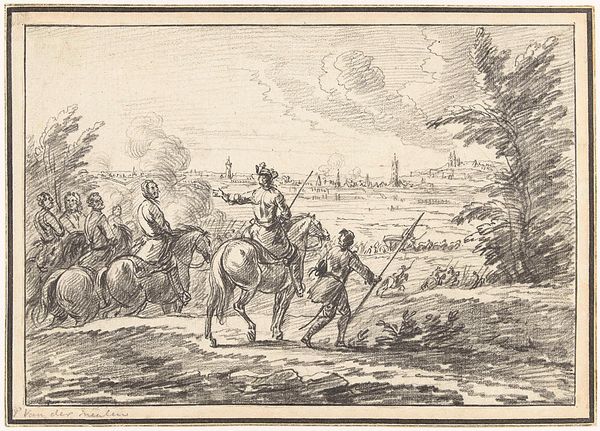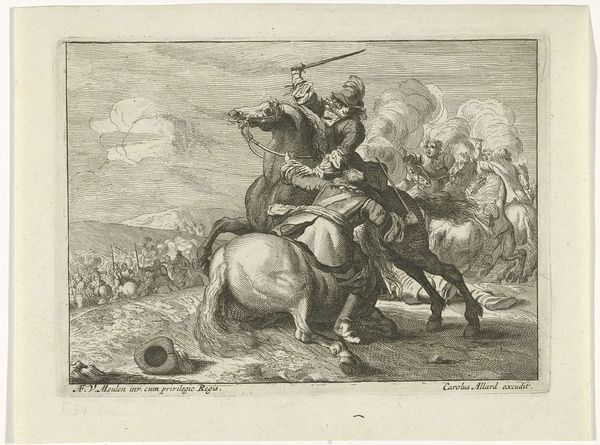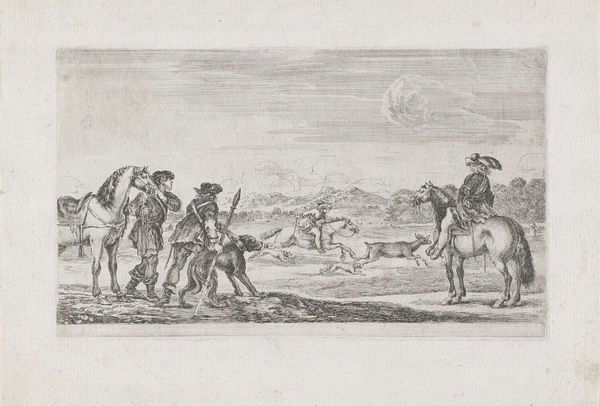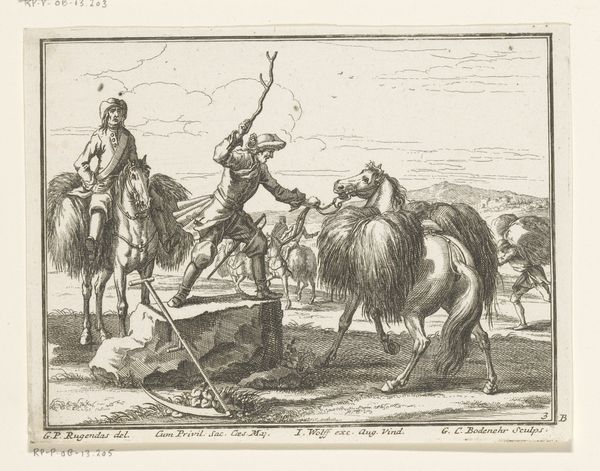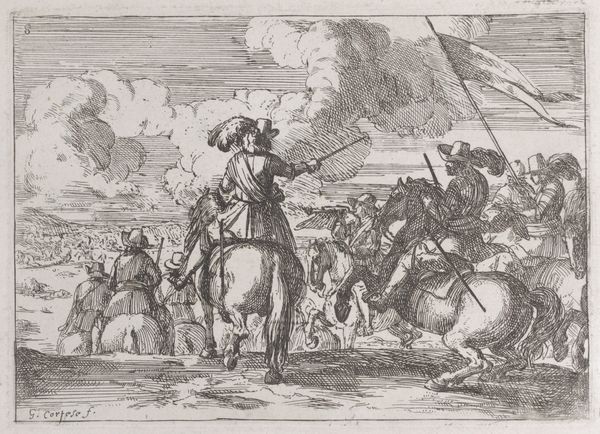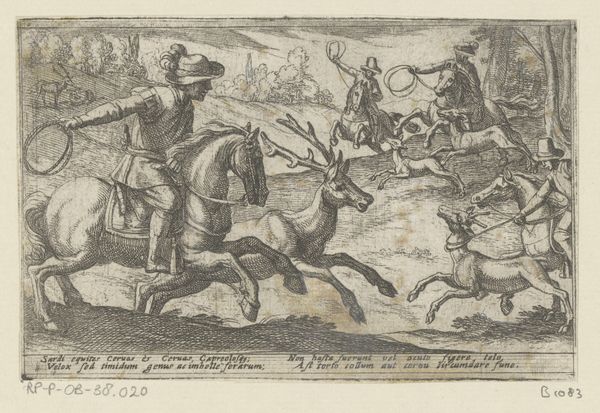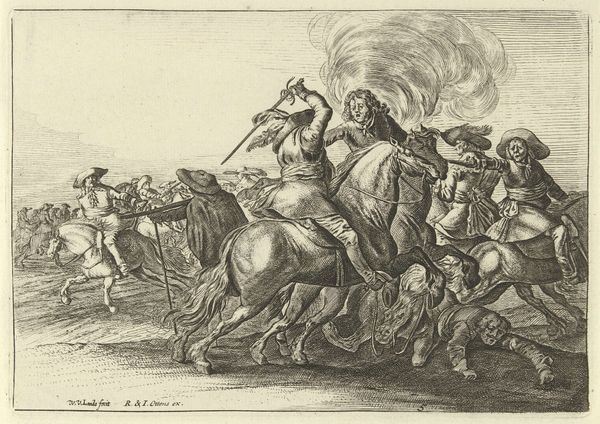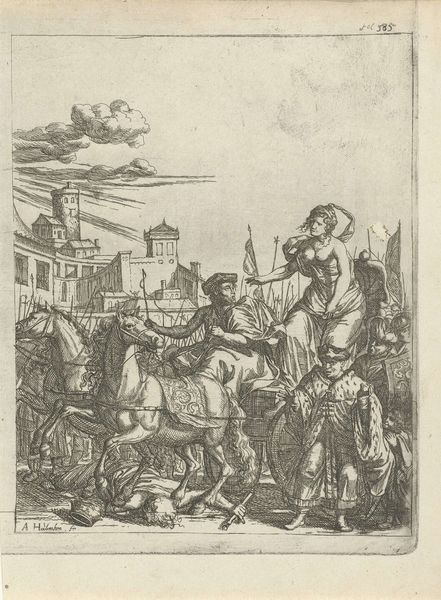
print, engraving
#
narrative-art
#
baroque
# print
#
landscape
#
figuration
#
history-painting
#
engraving
Dimensions: height 123 mm, width 160 mm
Copyright: Rijks Museum: Open Domain
Editor: This print, "Cavaleristen nemen vee in beslag" from sometime between 1686 and 1710, attributed to Georg Conrad Bodenehr, depicts cavalrymen seizing livestock. It's quite detailed despite being an engraving. It's interesting how the artist contrasted the chaos on the right with the calm of the soldiers on the left. What catches your eye when you look at this? Curator: The immediate contrast lies in the implied kinetic energy, doesn't it? Notice how the figures on the right are dynamically posed, their bodies contorted in gestures of supplication or distress. How does this contrast, then, with the rather rigid posture of the mounted figures to the left? Editor: Yes, I see that. It's almost as if they're in two separate worlds. The left is about order and control, while the right is utter disarray. Is this kind of dichotomy typical of Baroque art? Curator: The Baroque period certainly saw an interest in heightened drama and emotional intensity. Consider how the lines of the composition converge towards the center, focusing our attention on the interaction between the soldiers and the villagers. The linear quality of the engraving allows for incredible precision in details, each line carefully placed to articulate form and texture. Editor: I hadn't noticed the converging lines so clearly before. It makes the composition much more impactful. I suppose analyzing the linear and structural elements tells the story, more than the subject matter itself? Curator: Exactly. The structure itself communicates power dynamics. How else could we read the relationship between those holding the reins and those yielding to them, formally speaking? Editor: That's fascinating. I'll definitely pay closer attention to compositional techniques like that from now on!
Comments
No comments
Be the first to comment and join the conversation on the ultimate creative platform.
